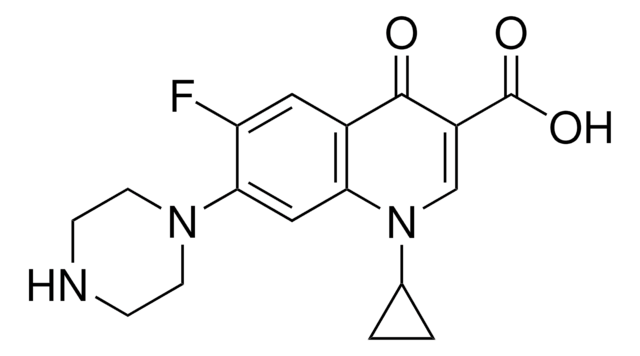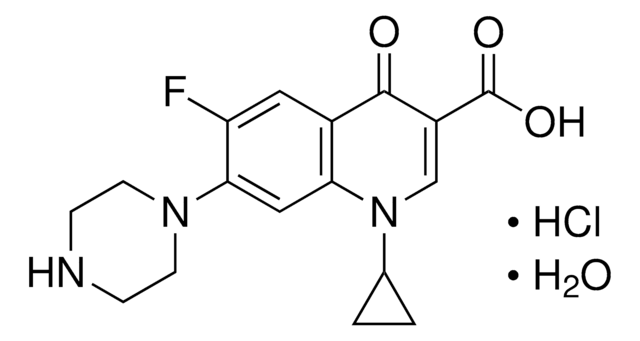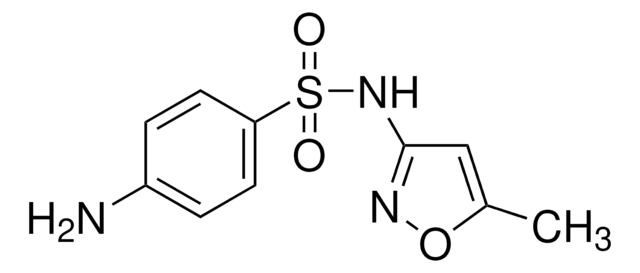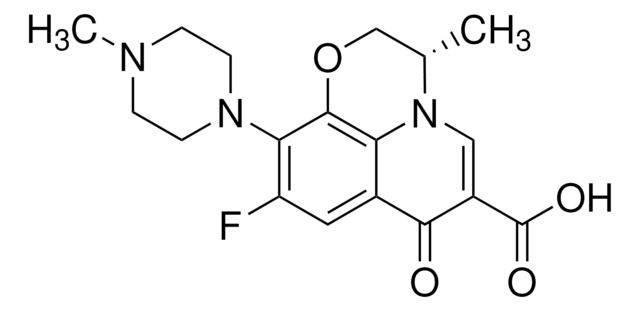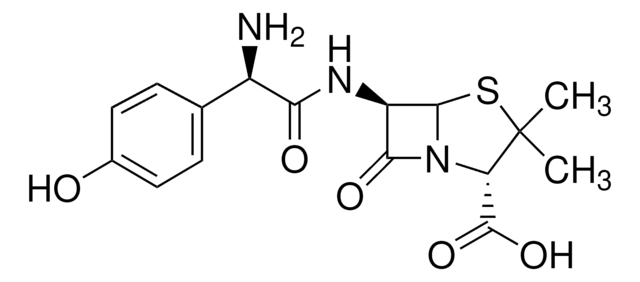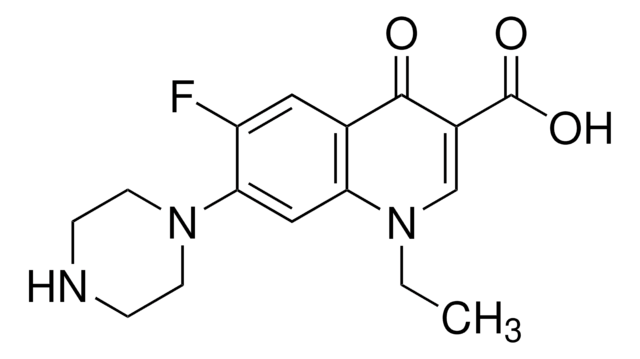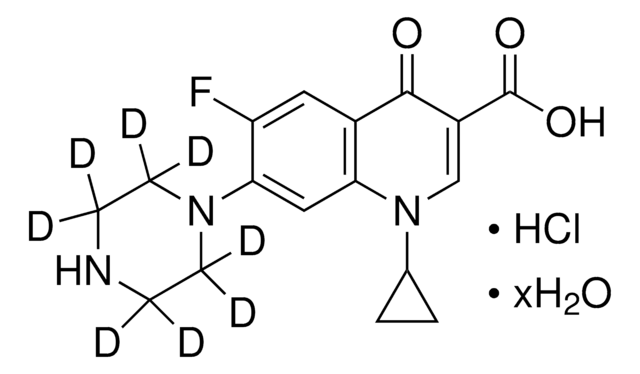17850
Ciprofloxacin
≥98% (HPLC)
Synonym(s):
1-Cyclopropyl-6-fluoro-4-oxo-7-(piperazin-1-yl)-1,4-dihydroquinoline-3-carboxylic acid, Ciprobay
Select a Size
Select a Size
About This Item
Recommended Products
Agency
EPA 1694
Quality Level
Assay
≥98% (HPLC)
form
powder or crystals
antibiotic activity spectrum
Gram-negative bacteria
Gram-positive bacteria
application(s)
environmental
Mode of action
DNA synthesis | interferes
enzyme | inhibits
SMILES string
OC(=O)C1=CN(C2CC2)c3cc(N4CCNCC4)c(F)cc3C1=O
InChI
1S/C17H18FN3O3/c18-13-7-11-14(8-15(13)20-5-3-19-4-6-20)21(10-1-2-10)9-12(16(11)22)17(23)24/h7-10,19H,1-6H2,(H,23,24)
InChI key
MYSWGUAQZAJSOK-UHFFFAOYSA-N
Looking for similar products? Visit Product Comparison Guide
Related Categories
General description
Chemical structure: fluoroquinolone
Application
Biochem/physiol Actions
Storage Class Code
11 - Combustible Solids
WGK
WGK 2
Personal Protective Equipment
Choose from one of the most recent versions:
Certificates of Analysis (COA)
Don't see the Right Version?
If you require a particular version, you can look up a specific certificate by the Lot or Batch number.
Already Own This Product?
Find documentation for the products that you have recently purchased in the Document Library.
Which document(s) contains shelf-life or expiration date information for a given product?
If available for a given product, the recommended re-test date or the expiration date can be found on the Certificate of Analysis.
How do I get lot-specific information or a Certificate of Analysis?
The lot specific COA document can be found by entering the lot number above under the "Documents" section.
What is the solubility of Product 17850, Ciprofloxacin?
17850 is the free base of ciprofloxacin. It is soluble in 0.1N HCl at 25 mg/ml. Ciprofloxacin is poorly soluble in DMSO. For HPLC, dissolve the sample material in a mixture ofAcetonitril/Phosphoric acid pH 2.4 by ultrasonification (5 mg/10 ml solvent).
Can Product 17850, Ciprofloxacin, be used in cell culture?
We have not done cell culture testing with this product.
What is the potency of Product 17850, Ciprofloxacin?
The potency of this product has not been determined by our Quality Control or by our supplier.
Can Product 17850, Ciprofloxacin, be used to remove Mycoplasma contaminations?
We have not tested the product for that application. However, there is a reference in Roche's Biochemica Newsletter Issue 1 from 1996 that describes using Ciprofloxacin in mycoplasma contamination.
How do I find price and availability?
There are several ways to find pricing and availability for our products. Once you log onto our website, you will find the price and availability displayed on the product detail page. You can contact any of our Customer Sales and Service offices to receive a quote. USA customers: 1-800-325-3010 or view local office numbers.
What is the Department of Transportation shipping information for this product?
Transportation information can be found in Section 14 of the product's (M)SDS.To access the shipping information for this material, use the link on the product detail page for the product.
My question is not addressed here, how can I contact Technical Service for assistance?
Ask a Scientist here.
Our team of scientists has experience in all areas of research including Life Science, Material Science, Chemical Synthesis, Chromatography, Analytical and many others.
Contact Technical Service